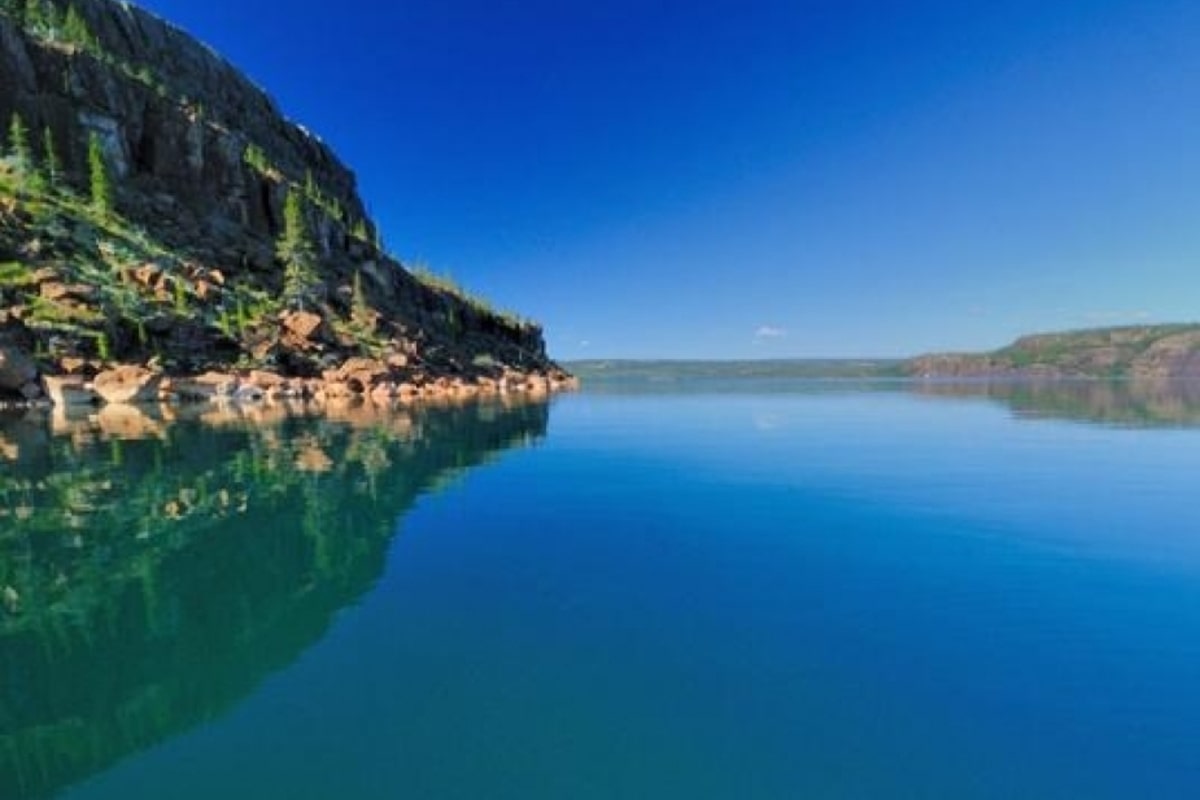Great Bear Lake is one of the most impressive bodies of water in North America, located in Canada’s Northwest Territories. Surrounded by wild landscapes, dense forests, and icy panoramas, it has preserved its original Arctic character. This lake is fascinating not only for its size but also for its unique ecology, geology, and historical significance. Many people are unaware that it is one of Canada’s greatest natural treasures. The following interesting facts will offer a new perspective on this remarkable region.
- Great Bear Lake ranks as the fourth largest lake in North America, after Lake Superior, Huron, and Michigan. Its surface area is about 31,000 square kilometers, making it larger than countries like Belgium or Israel. It is the largest lake entirely located within Canadian borders.
- The name of the lake comes from the language of the Dene people, where the word “sahtú” means bear. According to legend, large white bears once roamed the area, which gave the lake its name. Today, Sahtú is also the name of the local Indigenous community living near the lake.
- The lake was formed about 10,000 years ago, following the retreat of the last glacial period. Its basin has remained largely unchanged since then. As a result, the water remains exceptionally clear and cold.
- The lake reaches depths of over 440 meters, placing it among the ten deepest lakes in the world. In its deepest parts, sunlight barely penetrates and the water stays frigid year-round. Even during summer, the lower layers remain icy cold.
- Great Bear Lake is frozen for most of the year, usually from November to June. A thick ice sheet forms on its surface, which local residents use as a winter transportation route. Supplies and cargo are often transported across the ice to remote settlements.
- The lake is home to many species of fish, with Arctic char and lake trout being the most well-known. Some fish grow to enormous sizes and attract sport fishermen from around the world. It is not uncommon to catch trout weighing over 20 kilograms.
- The lake’s water is considered among the purest on Earth. Its clarity allows for visibility of the lakebed at several meters of depth. It is an important site for environmental and climate research.
- On the southern shore lies a small settlement called Deline, the only permanent community along the lake’s edge. It is home to around 500 people, most of whom are members of the Sahtú First Nation. Deline is considered one of the most remote inhabited places in Canada.
- The lake has five large arms that stretch deeply into the land, giving it an almost pentagonal shape. Each arm has its own name and contributes to a shoreline that spans over 2,700 kilometers. The complex shape adds to the lake’s distinct character.
- The lake holds deep cultural significance for local Indigenous peoples. It is believed that its waters possess healing properties and are linked to natural spirits. Oral traditions and ceremonial practices are still passed down from generation to generation.
- In the 1930s, deposits of uranium and silver were discovered near the lake, leading to a period of industrial exploration. The area became a focal point of Canadian mining efforts. However, many of the mines were later closed due to environmental concerns.
- The region has a subarctic climate with long, harsh winters and short, mild summers. In January, average temperatures can drop below minus 30 degrees, while July can see temperatures rise above 20 degrees. These conditions support unique flora and fauna.
- Great Bear Lake is part of the Mackenzie River watershed, one of the largest river systems in North America. The Bear River flows from the lake into the Mackenzie, playing a crucial role in the region’s hydrology. The water flow supports fish migration and ecological balance.
- Northern lights are often visible above the lake during clear nights. This natural phenomenon is common in high-latitude regions and creates a mesmerizing spectacle. Many visitors and scientists travel to the area specifically to witness this display.
- There are almost no roads leading to the lake, and air transportation is the primary means of access. Small planes and floatplanes deliver people and supplies to scientific stations and hunting camps. This remoteness helps preserve the pristine nature of the lake.
These interesting facts about Great Bear Lake reveal it as a place of extraordinary natural and cultural importance. Its stunning beauty and ecological value make it a gem not only for Canada but for the world. Learning about such places helps us appreciate the rich diversity and complexity of our planet.





